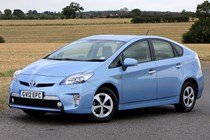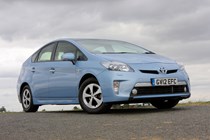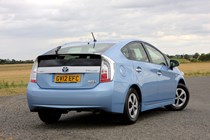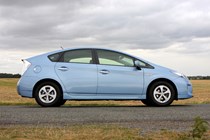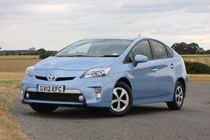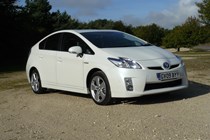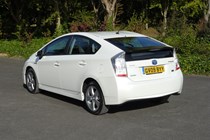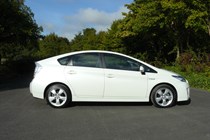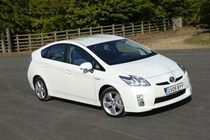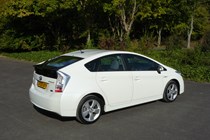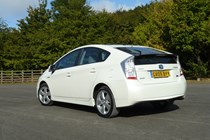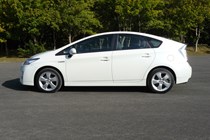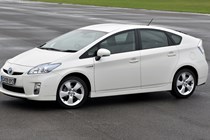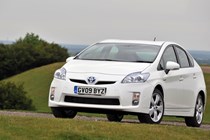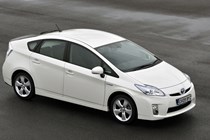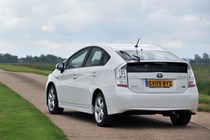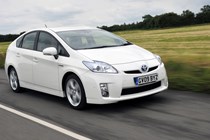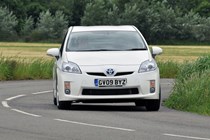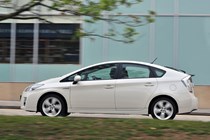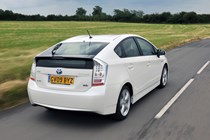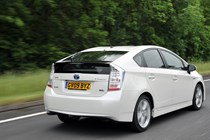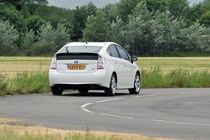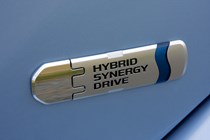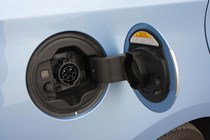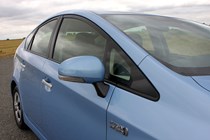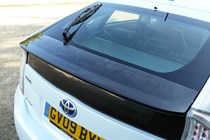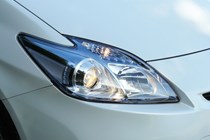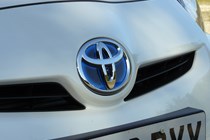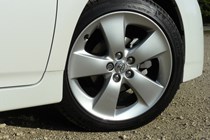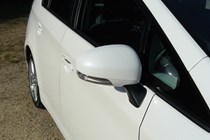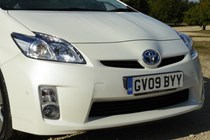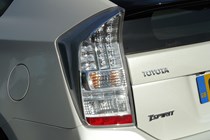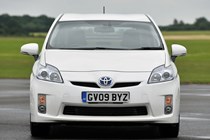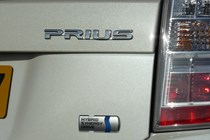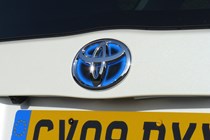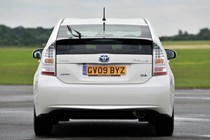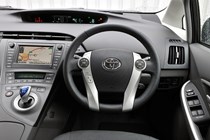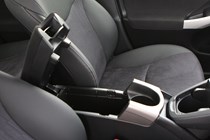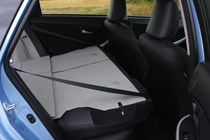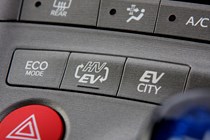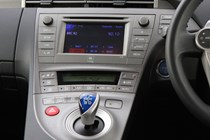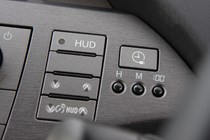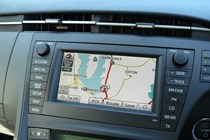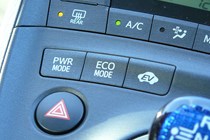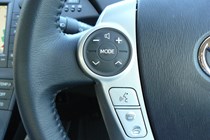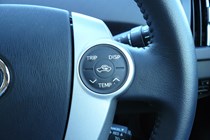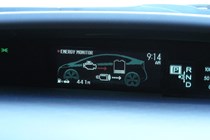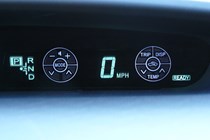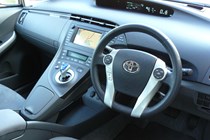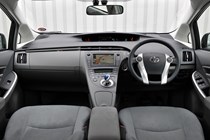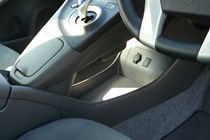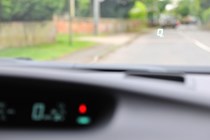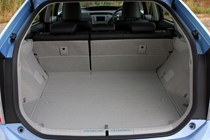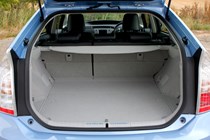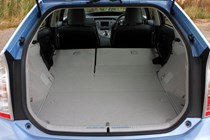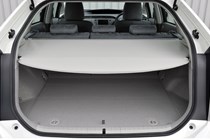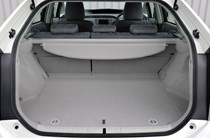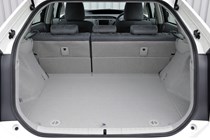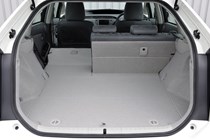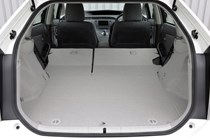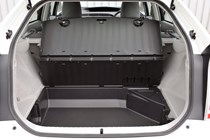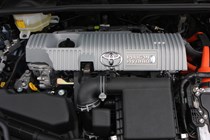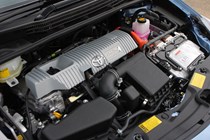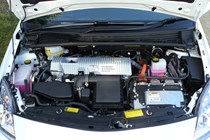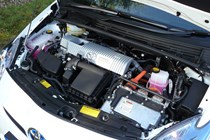
Toyota Prius Hatchback (2009-2015) engines, drive and performance
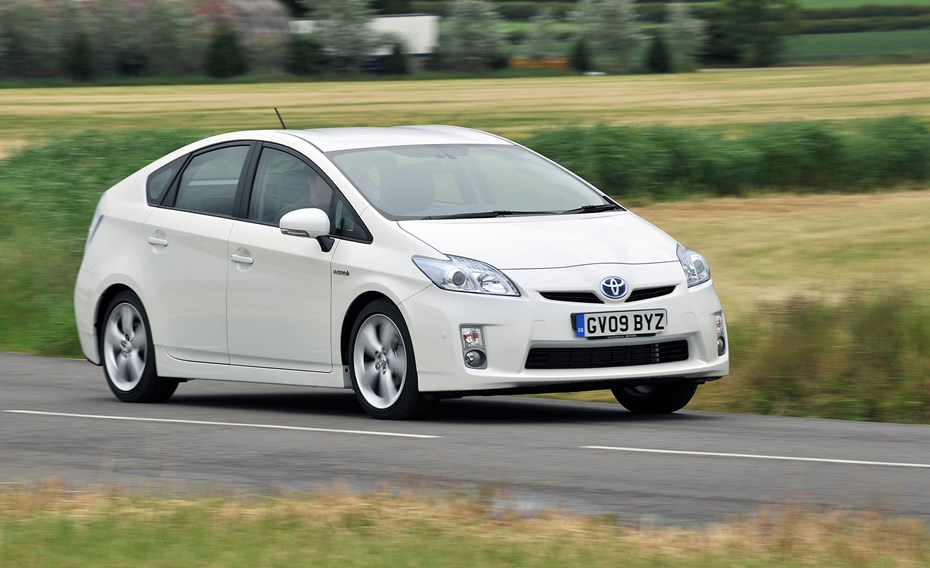
Hybrid engines
Used hybrid cars may seem complicated but in theory they’re quite simple – as well as supremely reliable. There’s a standard petrol engine – in this case a 1.8-litre with 100hp – along with an electric motor which can provide extra power when needed or can actually drive the car on its own. The electric motor is powered by batteries which are charged by the engine, as well as during deceleration and braking.
Petrol and electric motor combined give the Prius 136hp and a 0-62mph time of 10.4 seconds – that’s two seconds quicker than the Honda Insight. Compared with the Prius Mk2 (which used a 1.5-litre engine), this model is more powerful and accelerates faster, yet impressively manages to emit less CO2 – down to just 89g/km of CO2 – and is significantly more economical with a claimed average of 72mpg. We managed 55mpg the last time we spend any time in one, which is not too shabby.
What’s it like to drive?
This excellent fuel consumption gives the Toyota a range of up to 715 miles on one tank of fuel. In everyday driving, the Prius feels very much like any standard petrol automatic car and that’s a big compliment. It’s responsive when you accelerate and although the CVT automatic gearbox can at times hold high (and noisy) revs, it’s not strained and pulls well, making overtaking easy.
In other words, it’s unlike any other previous hybrid car of this size. The Power Mode seems ironic in a car designed for green driving, but it’s useful for quicker progress as it boosts power and makes the engine more responsive to throttle inputs.
Plug-in differences
The Prius Plug-in uses a four-cylinder 1.8-litre 100hp petrol engine and an electric motor that combine to make a total power output of 134bhp.
It’ll get from 0-62mph in 10.7 seconds and go on to a top speed of 112mph. The Prius Plug-in has three driving modes: HV, EV and EV-City. In HV mode it operates in pretty much the same way as the standard Prius with the petrol engine kicking in when more power is required. In EV electric-only mode the driver can only travel up to 15 miles and up to 51mph but no petrol is used and there are zero CO2 emissions.
In EV-City mode the driver has to be more forceful with the throttle until the petrol motor kicks in. It really is a more laconic driving mode designed to maximise the time you are in full electric mode.
Toyota Prius drive modes
Toyota worked hard to make the Prius feel like a standard petrol car to drive and the results are very impressive. The steering is nicely weighted and pretty responsive, so although there’s not a whole lot of feel, it actually corners very well and body roll is kept in check. All models come with low-rolling resistance tyres to aid economy but grip is respectable as long as you don’t push it too hard.
Like the Prius Plug-in the standard Prius can driven in EV mode which means it only uses electric power motor – but only up to 31mph – and it will silently creep along in traffic using no fuel and emitting zero CO2. In terms of handling the Prius Plug-in is pretty much the same as the Prius but it does weigh 50kg more.
It uses the same suspension components but they have been adjusted to allow for the car’s extra weight, primarily a result of the extra lithium-ion batteries under the boot floor. The power steering was also revised to account for the extra weight.


